How to Implement Pair Programming in Marketing

Marketing isn’t just creative work anymore; it’s execution-heavy, fast-paced, and often dependent on multiple technical and non-technical contributors. Whether it’s launching a cross-channel campaign, optimizing landing pages, or coordinating with analytics teams, marketers today navigate a complex system of interconnected workflows.
That’s why pair programming, a practice borrowed from software development, is increasingly making its way into marketing departments. Done right, it can help reduce silos, elevate quality, and speed up execution.
In this article, we explore how marketing teams can apply pair programming principles to their workflows, what kind of tasks benefit most, and how visualized workflows help scale collaboration across mid-market and enterprise teams.
What is Pair Programming in Marketing?
Pair programming involves two people working closely together on a single task, often alternating between roles: one person acts as the "driver" (hands-on execution), while the other is the "navigator" (strategic oversight or peer review). Applied to marketing, it’s a model for structured collaboration on deliverables like:
- Ad creative development
- Email campaign automation
- Social media calendar creation
- Content optimization and publishing
- Marketing analytics reporting
It works especially well when tasks require both domain knowledge and execution skills, say, an SEO expert pairing with a content writer, or a campaign strategist partnering with a performance marketer.
4 Reasons Why Pair Programming in Marketing Works for Modern Teams
Marketing today moves fast and it rarely succeeds in silos. Pair programming in marketing helps teams move with alignment, clarity, and fewer reworks, especially when speed and cross-functional input are non-negotiable.
1. Faster Iteration with Fewer Mistakes
When teams collaborate in real-time, feedback loops are tighter. Instead of waiting for review cycles, issues are spotted and solved instantly. This is particularly useful for ad creatives or email campaigns where small copy errors or layout problems can impact performance. A structured process like the ad creative approval process template helps keep paired teams aligned during review cycles.
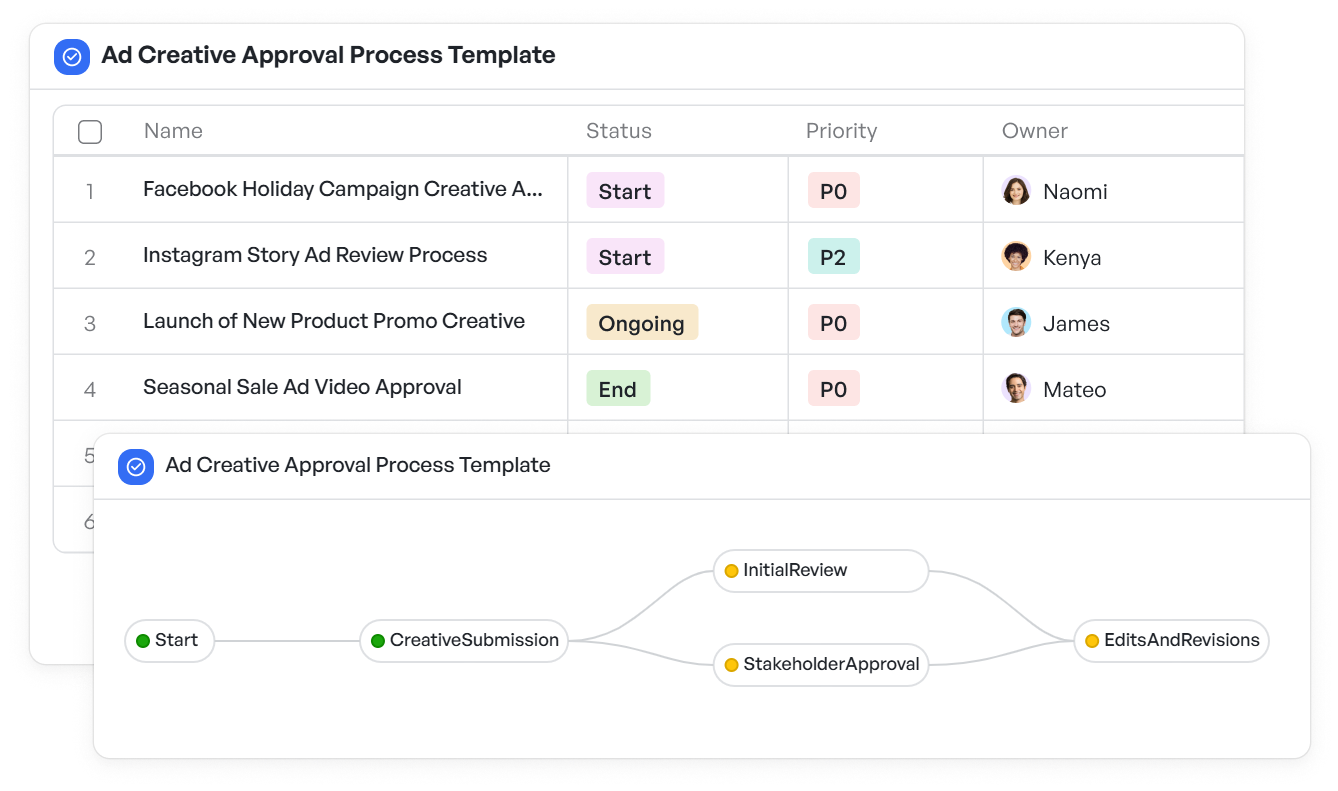 Streamline real-time reviews and reduce back-and-forth in creative approvals
Streamline real-time reviews and reduce back-and-forth in creative approvals2. Improved Knowledge Transfer
Pairing an experienced marketer with a junior team member is a great way to scale knowledge. It helps new hires ramp up faster, ensures consistency across campaigns, and reduces single points of failure.
3. Better Cross-Functional Alignment
Marketing rarely works in isolation. SEO needs dev support. CRM needs analytics. Creative needs approvals. Pairing functions together—content + search engine optimization (SEO), ads + design, ops + analytics—leads to clearer briefs, smoother execution, and fewer reworks.
For example, when SEO leads and content marketers pair, the SEO content calendar planner template can act as a shared space to coordinate keywords, publishing timelines, and task ownership.
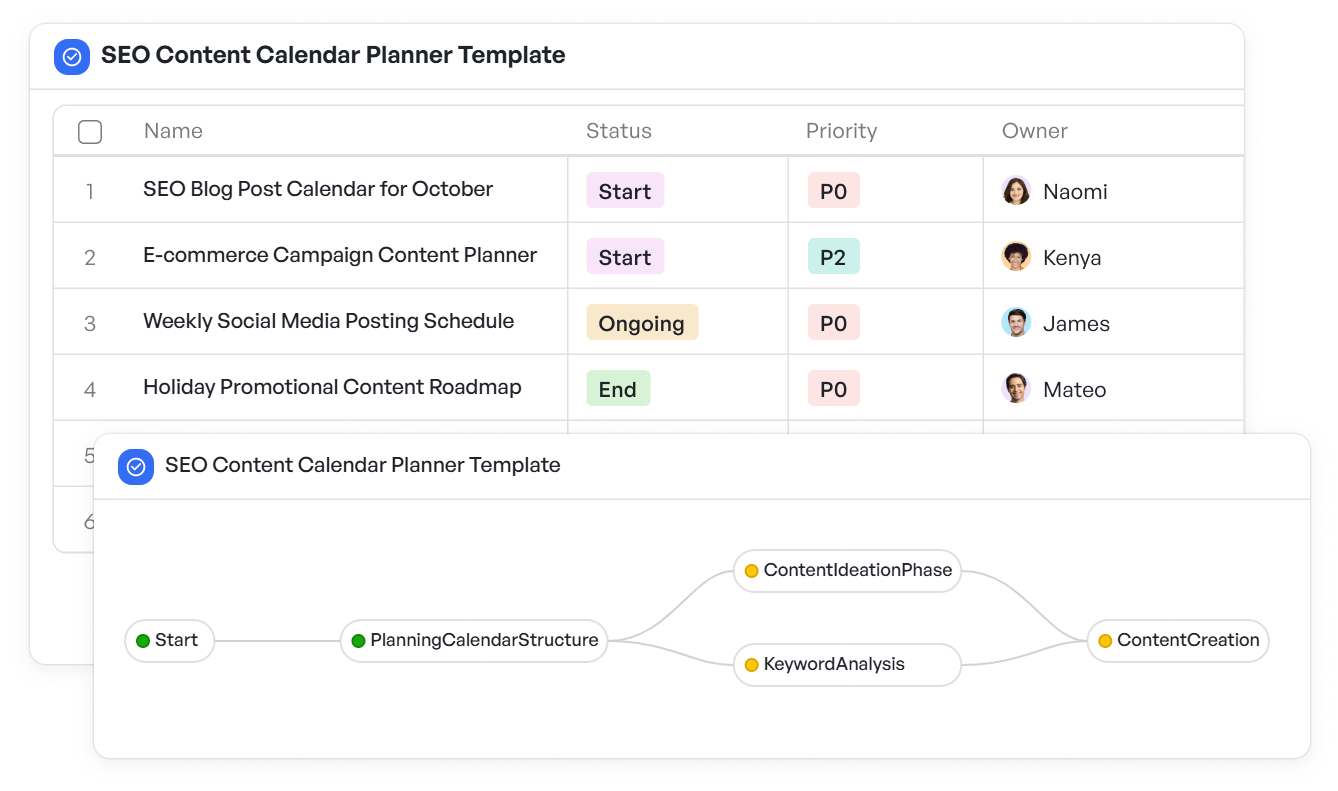 Align SEO and content teams on priorities, timelines, and ownership from the start
Align SEO and content teams on priorities, timelines, and ownership from the start4. Psychological Safety and Peer Accountability
Having a partner encourages open conversation, peer learning, and distributed ownership. People are more likely to speak up when they spot an issue or have an idea, making collaboration more honest and productive.
When to Use Pair Programming in Marketing
Not every task needs to be paired, but certain types benefit significantly:
| Use Case | Example Pair | Outcome |
|---|---|---|
| Campaign Briefing & Setup | Growth Strategist + Ops Manager | Reduced scope creep, clean hand-offs |
| SEO Optimization | SEO Lead + Content Writer | Higher search engine results page (SERP) visibility, better structure |
| Ad Creative Production | Designer + Copywriter | Faster creative cycles, consistent branding |
| Email Nurture Flows | Lifecycle Marketer + Automation Specialist | Error-free automation, tailored messaging |
| Analytics Review | Channel Owner + Data Analyst | Actionable insights, fewer reporting gaps |
Pairing is especially effective at the start of campaigns, during handoffs, and during quality assurance (QA) or review stages.
The Role of Visual Workflows for Pair Programming in Marketing
While pairing helps with tactical alignment, it doesn’t scale unless the broader workflow is transparent. That’s where visual workflows make a difference.
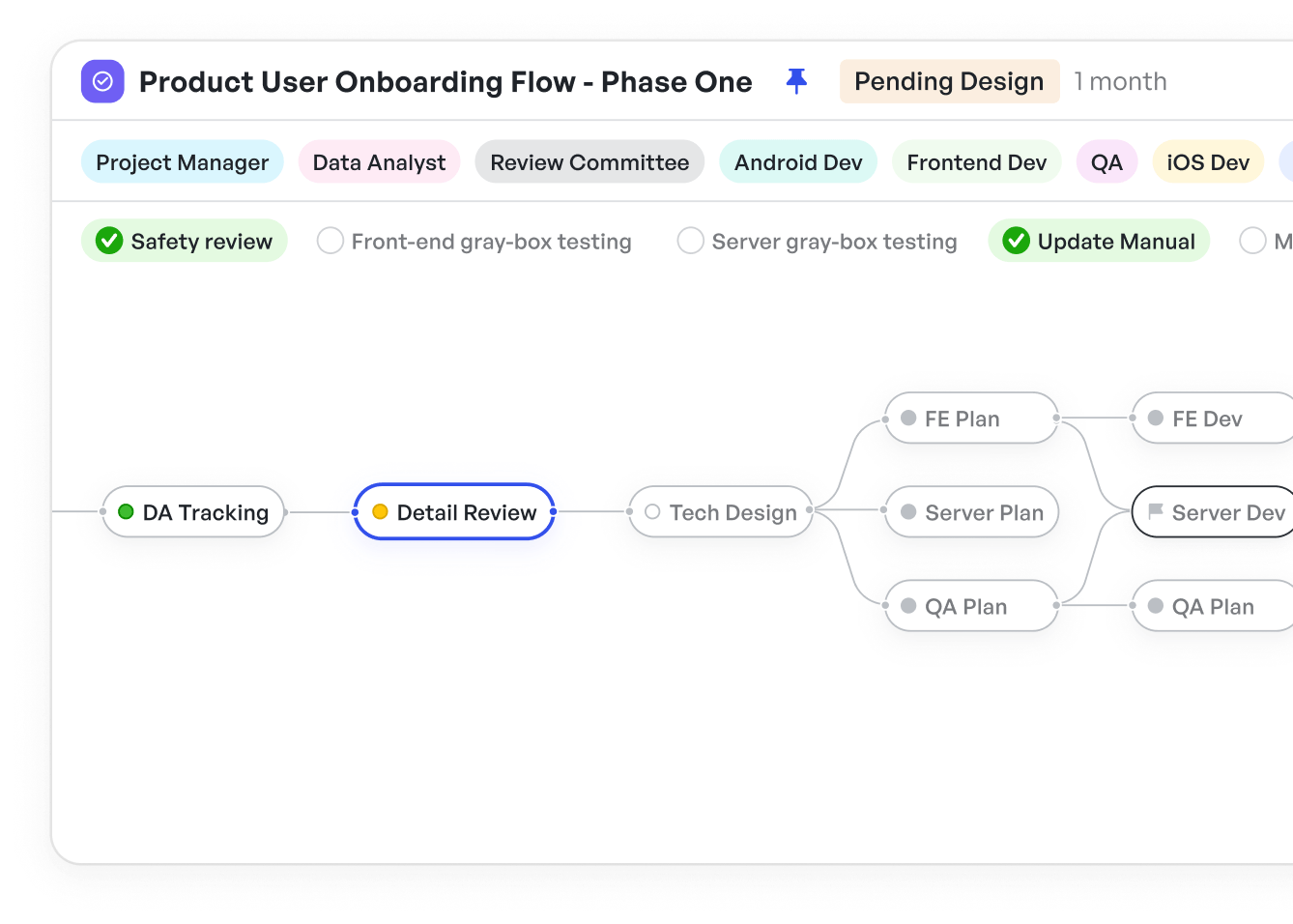
For instance, when multiple pairs work across a shared campaign (design, copy, analytics, paid), a visual workflow lets everyone see:
- Who owns what
- What’s complete vs pending
- How dependencies are mapped
- Where blockers or delays exist
This clarity removes the need for constant status updates and reduces confusion around ownership. For mid-market and enterprise teams, where scale and clarity are essential, visualized workflows become foundational.
If campaign teams are juggling budget changes and resource shifts, pairing a marketing lead with someone from finance or ops becomes more effective when supported by tools like the campaign budget reallocation protocol template, which helps document adjustments and prevent budget misfires.
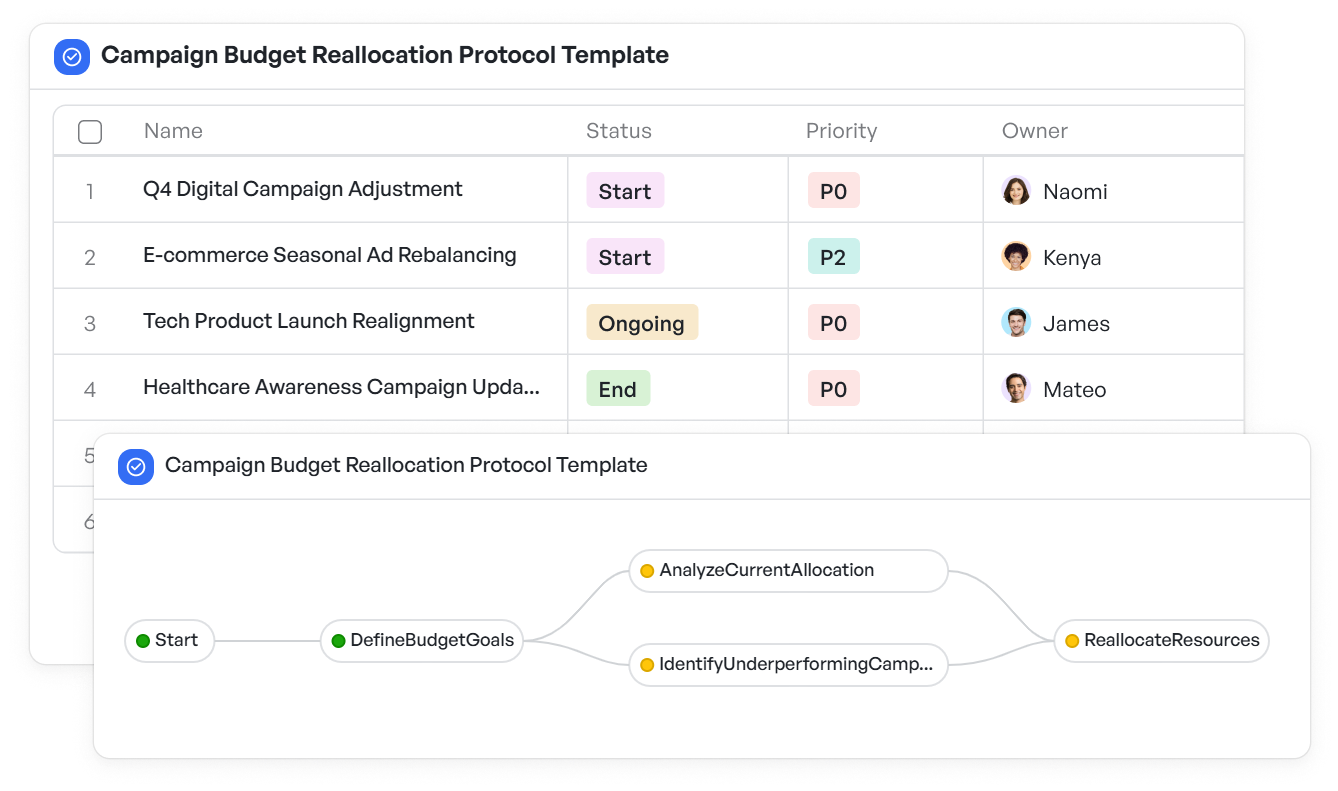 Log campaign budget changes clearly and avoid miscommunication across teams
Log campaign budget changes clearly and avoid miscommunication across teamsSimilarly, for social-focused projects, when a strategist and community manager work together, the social media campaign timeline tracker template ensures post schedules, copy drafts, and media assets stay in sync without relying on scattered updates.
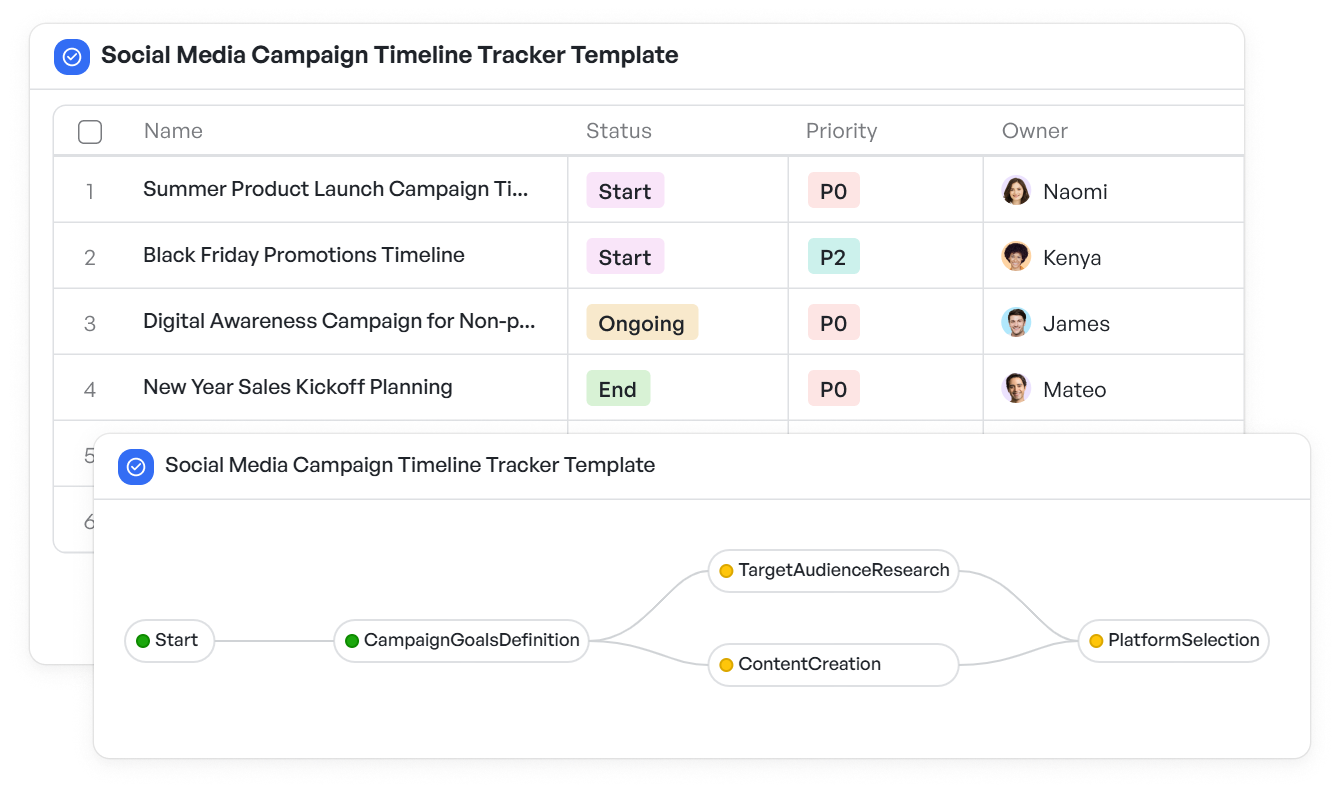 Keep social content, copy, and assets aligned across roles without chasing updates
Keep social content, copy, and assets aligned across roles without chasing updatesCommon Pitfalls to Avoid with Pair Programming in Marketing
Even good collaboration can fall flat without structure. Here are a few watchouts:
- Undefined roles: If both people in a pair try to own the same decisions, it slows down execution. Define who drives and who reviews.
- Unbalanced expertise: Don’t pair two juniors and expect strategic outcomes. Mix experience levels intentionally.
- Too much pairing: Overuse can lead to decision fatigue or wasted time. Reserve pairing for high-impact or error-prone tasks.
- Poor documentation: If the pair doesn’t update the broader team or tools, the benefits get lost. Pairing should feed the workflow, not bypass it.
5 Ways Leaders Can Roll Out Pair Programming in Marketing
Rolling out pair programming doesn’t require a full process overhaul. Start small:
- Identify high-leverage use cases: Find 2-3 tasks where pairing could immediately improve quality or speed.
- Create intentional pairings: Mix senior with junior, technical with non-technical, creative with analytical.
- Define success outcomes: What should the pair accomplish in the session? Be specific.
- Use workflow tools to track: Visual boards help others stay informed.
- Rotate pairs: Over time, this builds cross-functional trust and team cohesion.
Marketing teams that roll this out thoughtfully often find hidden inefficiencies, surface more ideas, and build better campaigns in less time.
Accelerate Campaign Success with Strategic Pairing
Pair programming isn’t just about productivity—it helps teams build clarity, resilience, and shared standards.
In fast-moving marketing departments, especially within growing software and SaaS businesses, pairing helps prevent misalignment, encourages smarter decision-making, and makes your team’s output more consistent.
And when layered onto a visualized workflow, these benefits scale across campaigns, departments, and regions.
Coordinate pair programming in marketing with less chaos and more clarity using Meegle.
The world’s #1 visualized project management tool
Powered by the next gen visual workflow engineRead More
Check All BlogsStart creating impactful work today



